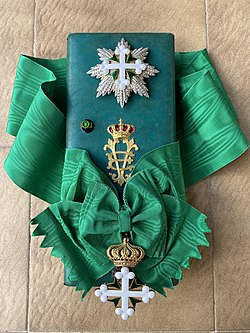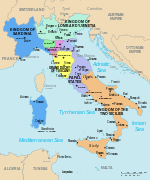
The House of Savoy is an Italian royal house that was established in 1003 in the historical Savoy region. Through gradual expansion, the family grew in power from ruling a small Alpine county north-west of Italy to absolute rule of the Kingdom of Sicily from 1713 to 1720, when they were handed the island of Sardinia, over which they would exercise direct rule from then onward.
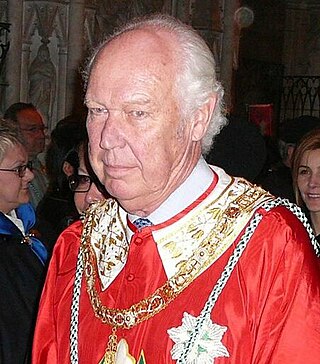
Prince Vittorio Emanuele of Savoy, Prince of Naples, was the only son of Umberto II, the last King of Italy, and Marie-José of Belgium. Vittorio Emanuele also used the title Duke of Savoy and claimed the headship of the House of Savoy. These claims were disputed by supporters of his third cousin, Prince Amedeo, Duke of Aosta, and later by Amedeo's son, Aimone.

Amadeo I, also known as Amadeus, was an Italian prince who reigned as King of Spain from 1870 to 1873. The only king of Spain to come from the House of Savoy, he was the second son of Victor Emmanuel II of Italy and was known for most of his life as the Duke of Aosta, the usual title for a second son in the Savoyard dynasty.

Prince Aimone, 4th Duke of Aosta was a prince of Italy's reigning House of Savoy and an officer of the Royal Italian Navy. The second son of Prince Emanuele Filiberto, Duke of Aosta, he was granted the title Duke of Spoleto on 22 September 1904. He inherited the title Duke of Aosta on 3 March 1942 following the death of his brother Prince Amedeo in a British prisoner of war camp in Nairobi.

The Order of Saint Lazarus of Jerusalem, also known as the Leper Brothers of Jerusalem or simply as Lazarists, was a Catholic military order founded by Crusaders around 1119 at a leper hospital in Jerusalem, Kingdom of Jerusalem, whose care became its original purpose, named after its patron saint, Lazarus. It was recognised by King Fulk in 1142 and canonically recognised as a hospitaller and military order of chivalry under the rule of Saint Augustine in the Papal bull Cum a Nobis Petitur of Pope Alexander IV in 1255. Although they were centred on their charism of caring for those afflicted with leprosy, the knights of the Order of Saint Lazarus notably fought in the Battle of La Forbie in 1244 and in the Defense of Acre in 1291. The titular seat was successively situated at Jerusalem, then Acre. After the fall of the Kingdom of Jerusalem, the order split into two main branches – in Italy and in France.
Emmanuel Philibert of Savoy, a name shared by several members of the House of Savoy, may refer to:
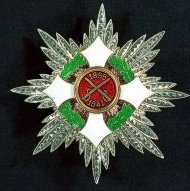
The Military Order of Italy is the highest military order of the Italian Republic and the former Kingdom of Italy. It was founded as the Military Order of Savoy, a national order by the King of Sardinia, Vittorio Emanuele I, Duke of Savoy in 1815. The order is awarded in five degrees for distinguished wartime conduct of units of the armed forces or individual personnel that has "proven expertise, a sense of responsibility and valour."

The Supreme Order of the Most Holy Annunciation is a Roman Catholic order of chivalry, originating in Savoy. It eventually was the pinnacle of the honours system in the Kingdom of Italy, which ceased to be a national order when the kingdom became a republic in 1946. Today, the order continues as a dynastic order under the jurisdiction of the Head of the House of Savoy.

An order of chivalry, order of knighthood, chivalric order, or equestrian order is an order of knights, typically founded during or inspired by the original Catholic military orders of the Crusades and paired with medieval concepts of ideals of chivalry.

Prince Amedeo of Savoy-Aosta, 5th Duke of Aosta was a claimant to the headship of the House of Savoy, the family which ruled Italy from 1861 to 1946. Until 7 July 2006, Amedeo was styled Duke of Aosta; on that date he declared himself Duke of Savoy, a title that was disputed between him and his third cousin, Vittorio Emanuele, Prince of Naples, only son of King Umberto II of Italy.

Emanuele Filiberto Umberto Reza Ciro René Maria di Savoia is a member of the House of Savoy. He is the son of Vittorio Emanuele of Savoy and only male-line grandson of Umberto II, the last King of Italy. In 2024, Emanuele Filberto became one of two claimants to the headship of the House of Savoy after the death of his father.

The Order of the Crown of Italy was founded as a national order in 1868 by King Vittorio Emanuele II, to commemorate the unification of Italy in 1861. It was awarded in five degrees for civilian and military merit. Today the Order of the Crown has been replaced by the Order of Merit of Savoy and is still conferred on new knights by the current head of the house of Vittorio Emanuele, Prince of Naples.

Prince Emanuele Filiberto Vittorio Eugenio Alberto Genova Giuseppe Maria di Savoia, 2nd Duke of Aosta was an Italian general and member of the House of Savoy, as the son of Amadeo I, and was also a cousin of Victor Emmanuel III of Italy. Filiberto was also commander of the Italian Third Army during World War I, which earned him the title of the "Undefeated Duke". After the war he became a Marshal of Italy.

Vittoria Cristina Adelaide Chiara Maria di Savoia is the daughter and heir apparent to Emanuele Filiberto of Savoy, Prince of Venice, who is a claimant to the headship of the House of Savoy, the former ruling house of the Kingdom of Italy.
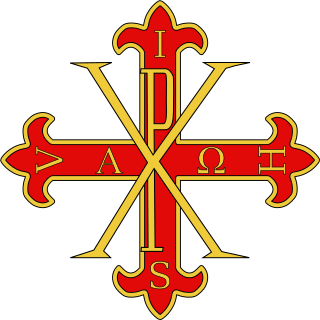
The Sacred Military Constantinian Order of Saint George (SMOCG) (Italian: Sacro Militare Ordine Costantiniano di San Giorgio, Spanish: Sagrada Orden Militar Constantiniana de San Jorge), also historically referred to as the Imperial Constantinian Order of Saint George and the Order of the Constantinian Angelic Knights of Saint George, is a family order of knighthood of the House of Bourbon-Two Sicilies. Currently, the grand magistry of the order is disputed among the two claimants to the headship of the former reigning House of Bourbon-Two Sicilies as heirs of the House of Farnese, namely Prince Pedro and Prince Carlo. The order was one of the rare orders confirmed as a religious-military order in the papal bull Militantis Ecclesiae in 1718 owing to a notable success in liberating Christians in the Peloponnese. Together with the Sovereign Military Order of Malta it is one of a small number of Catholic Orders that still has this status today. Although it is not an order of chivalry under patronage of the Holy See, membership is restricted to practising Catholics.

Maria Vittoria Carlotta Enrichetta Giovanna dal Pozzo, 6th Princess of Cisterna d'Asti and of Belriguardo, was an Italian noblewoman who was Queen of Spain from 16 November 1870 until 11 February 1873 as the wife of King Amadeo I. Maria Vittoria inherited her princely title after the death of her father. In 1867, she married Amadeo, then Duke of Aosta, second son of King Victor Emmanuel II of Italy. In 1870, her husband became the king of Spain, making her queen consort. King Amadeo abdicated after a reign of less than three years, and he and Maria Vittoria returned to Italy. She died in Sanremo, Italy, in 1876.

Emanuele Francesco Maria dei Principi Ruspoli, 1st Prince of Poggio Suasa was an Italian and a Prince of the Holy Roman Empire who twice served as the mayor of Rome.

Prince Eugenio of Savoy, 5th Duke of Genoa was a member of the House of Savoy, Duke of Ancona from birth, and the 5th and final Duke of Genoa. Prince Eugenio was the sixth and youngest child of Prince Thomas of Savoy, 2nd Duke of Genoa and his wife Princess Isabella of Bavaria.
The Civil Order of Savoy was founded as an order of knighthood in 1831 by the King of Sardinia, Charles Albert, Duke of Savoy. It is now replaced by the Order of Merit of Savoy.The intention was to reward those virtues not belonging to the existing Military Order of Savoy, founded by Vittorio Emanuele I in 1815. The order has one degree, that of Knight, and is limited to 70 members. Admission is in the personal gift of the head of the House of Savoy.

The Italian honours system is a means to reward achievements or service to the Italian Republic, formerly the Kingdom of Italy, including the Italian Social Republic.
